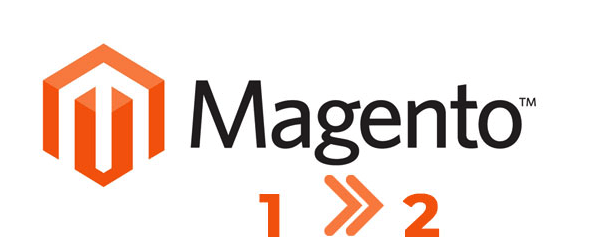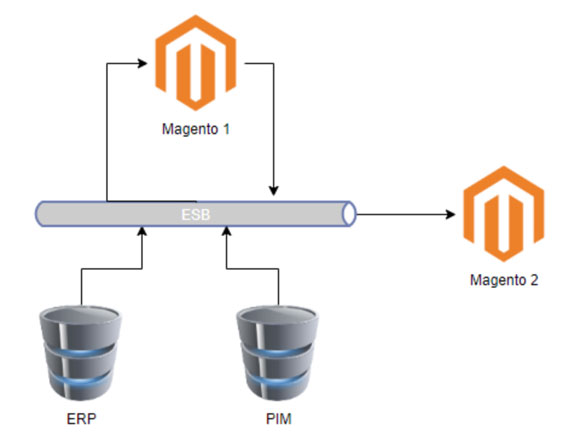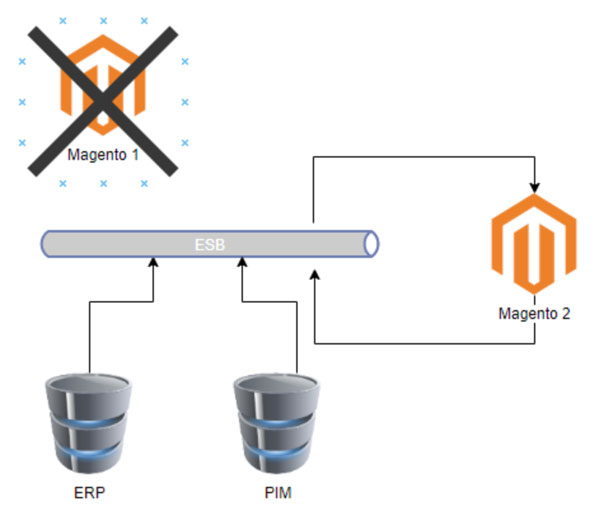
June 2020 is now a well-known deadline for holders of a Magento 1.x version: the end of technical support for the first version of the e-commerce solution.
As for Magento 2, it will soon be celebrating four years of existence (latest update being version 2.3.3).
Some e-merchants have already taken steps to redesign or migrate their platform to Magento 2 or chosing alternate. Others are still undecided in which way forward they should take about the future of their e-commerce platform.
As the deadline is fast approaching, we would like to offer you some insights, testimonials and other ideas that we do believe will allow you to have a clearer picture of the situation…
WHY SHOULD I UPGRADE MY MAGENTO 1?
SOME REASONS ARE OBVIOUS
As from June 2020, Magento will no longer support versions 1.x and will focus only on 2.x. This implies:
- No further patches to be provided
- No new features
- No update of technological stack (PHP version for example)
- No security patches update
In fact, the corrective aspect is minor because the latest versions are relatively stable, or the problems associated with them have already probably been bypassed by a good integrator.
The fact that no new feature is published is more constraining, but you still have the opportunity to make custom developments if necessary. However, do not expect new modules to be published in the Magento marketplace: extension builders will not continue to publish Magento 1 compatible extensions for long or even maintain them.
The last 2 points are problematic and are related. Indeed, in the medium term, the technological debt will widen between the current architectures and the foundations of Magento (Zend, PHP): you will have more and more difficulties to find a host that will accept your platform. You will of course have the solution to manage your hosting yourself, assumingyou have the capacity and the budget
Security updates can become a major risk, especially because of the hacking of sensitive data (clients, accounting, etc.). Magento’s current support is mainly active on the subject of security, and continues to ensure a regular action of corrections and upgrades until this well-publicised deadline (June 2020), to protect your website against known and exploited flaws.
OTHER REASONS MAY BE RELATED TO YOUR CIRCUMSTANCES
Support is coming to an end very soon and this is a source of concerns. However, regardless of this deadline, there may be other factors that lead you to abandonyour Magento 1 platform or contributeto your decision:
- Your platform has too many bugs and has become unstable
- The level of customisation of your platform has become too important and prevents you from taking advantage of updates or fluid maintenance
- Your sites need to be revamped, redesigned, basically rethought
- You need more advanced mobile or responsive versions
- You third-party tools or services, that are heavily coupled with your Magento 1 have changed
- You are unable to achieve the desired level of performance
- You are planning development of major new functionalities
- You plan to rollout new sites
- …
In fact, it’s a set of criteria that will dictate the deadline concerning your Magento 1 end of life.
AND WHAT ABOUT MAGENTO 2 IN ALL THIS?
The new version of Magento has a number of advantages that could appeal to you, by replacing and improving the ingredients that have already made this eCommerce platform successful.
In terms of architecture:
- Advanced customisation options that allow you to develop your own extensions or involve the community and users. With version 2, third-party modules are more reliable because they are subject to checks
- A shared back office between multiple sites, to simplify the management of your stores, which becomes more intuitive, ergonomic and responsive for multi-device use. Back office performance is also improved and supports more concurrent active administrators
- Ability to accommodate a large and complex catalogue, which is optimised in version 2 thanks to a new database design, improving the platform’s scalability. This is reflected on the front and back performance (3 separate databases: products, orders, payments)
- Standard integration of Varnish for cache management and compatibility with recent PHP versions (up to PHP 7.2 for the Magento 2.3 version)
- An architecture allowing to expose all or part of its features in the form of services, which will allow for example to use only the back office and to integrate a front office completely independent of the platform (“headless CMS” platform)
- Modernised technologies since version 2.0: jQuery, React, HTML5 and CSS3
For functional aspects:
- Native features closer to the current web and e-commerce expectations, regularly enhanced to adapt to market changes, with for example an integrated responsive theme for the front, a streamlined purchasing tunnel, cross-site translation sharing, staging features to optimise campaign management, etc.
- Version 2.3 also introduces a PWA (Progressive Web App) front (see our article on Magento and PWA)
- Also the integration of a WYSIWYG (What You See Is What You Get) editor in significant progress (page builder) which no longer requires HTML skills (drag and drop, instant preview, etc.)
- More advanced inventory management
- A version dedicated to B2B since Magento 2.2 (quote, purchase account, pricing grids, etc.)
- Increased support for Magento teams, with regular updates including new features, security updates whose easy installation no longer impacts specific developments
- Flexible APIs that make it easy to connect with a wide range of third-party services (ERP, CRM, CMS, PIM, among others) that are rapidly enhanced
MIGRATION IN PRACTICE: THE DIFFERENT ASPECTS OF MIGRATION, RISKS AND VIGILANCE POINTS
WHAT DATA CAN MIGRATE FROM MAGENTO 1 TO MAGENTO 2?
If you go from Magento 1 to Magento 2, some elements cannot be transferred due to the rewriting of the code between the two versions and the evolution of the architecture.
Themes and templates: unfortunately, they cannot be migrated as is from one version to the other. You have to rebuild them. You can, however, rely on the default Magento theme.
Extensions: Here too, the automatic upgrade is not possible. You will need to verify if a Magento 2 version of your extension has been provided by the publisher and is available on the marketplace or possibly if there are equivalent extensions from other publishers.
The feeds: again, no miracle. The interfaces and means of communication have been completely overhauled and you will have to recode the interfaces on the Magento side. If your architecture anticipated it you will have the Magento half-interfaces to recode. The only good news is that the APIs on version 2 are much more extensive and you can also rely on RabbitMQ.
SEO: Same problem… It will be up to you (or your SEO agency) to ensure the best possible resumption of your SEO. Remember to measure well before to facilitate the search for gaps after the migration: the temptation to review your indicator policy and redesign your tagging plan will be great. However, in order to have a ROI vision of your investments, the need to keep a common base of KPIs, for comparison, will be necessary.
The technical development team: again, no possible migration :-). More seriously, the design, architecture and code of Magento 2 are very different from those of Magento 1 and, if you have an in-house technical team trained on Magento 1, you will have to train them on Magento 2. This point is not to be taken lightly, because replicating Magento 1 practices on a Magento 2 platform would lead to disaster.
So what is the good news? Well, it concerns the data themselves. The Magento team has made available a Data Migration Tool that works quite well:
- Possibility of migrating almost all your items: products, clients, orders, invoices, shipments… You will of course have a part to develop on your specific or certain modules
- Pretty good performance: that is the benefit of working directly from database to database
- The possibility of proceeding by one shot or on a continuous basis (we tested this last point but finally could not retain it on the project concerned)
There are of course some limits or constraints, which imply to foresee the use of the tool upstream, but its interest is certain.
MIGRATION FROM MAGENTO 1: A PROJECT IN ITS OWN RIGHT
Migrating from a Magento 1 site is a project in its own right. As we have just seen, it is unrealistic to hope for a migration of the code of your platform. So, whether you choose a new platform or the Magento 2 platform for your target, you must consider that your project consists of:
- Building a new platform (for example on Magento 2)
- Ensuring the migration of data, your SEO, the training of your teams, links with your IS or other third party tools
- Preparing the change-over
AND ON D-DAY
The day of the “Go live”, a certain number of points of vigilance will have to be observed:
- Accessibility to the site
- Performance
- Visibility
- Contribution
A key element will be the recovery of data between your M1 and your M2. With this in mind, we can consider several deployment strategies:
- Closing of the old site while the data is being transferred (an extension is proposed by Magento)
- In parallel with the redesign, provide additional feeds that will feed both platforms at the same time; the new platform, even under construction, is powered with migrated data from the old platform so as to stay up to date and ready for change-over day

Before the production launch, feeds ensure the constant update of the future platform

When the production launch takes place, the future platform’s data is updated
WHAT VALUE ADDED CAN I TAKE?
IN PREAMBLE
If we look at what it means to migrate from Magento 1.x, we will have understood that this is a global redesign. The risks involved are clear:
- Typical project risks with the construction of the new platform, which is a project in its own right with the inherent risks (deadlines, costs and techniques)
- Risks on the turnover, in particular the change-over is a key moment and generates a de facto risk of loss of turnover (there are methodologies to reduce this risk but they can be expensive)
- Operational risks: a new platform will inevitably lead to different ways of working (technical and human), a different user experience (UX), etc.
Unless totally constrained, it seems important to us that the new solution brings value and is not seen as a technical replacement of an obsolete platform.
HOW DO I MEASURE WHAT A NEW PLATFORM WILL BRING TO ME?
This is the first question to ask. Make a list of what you lose, what you gain; integrate the risks into your calculations and make an assessment
The answers to these question will depend solely on your context, For example:
- Your Magento is currently designed with a great level of details, very customised and stable while perfectly meeting your needs. A small makeover of the front is perhaps needed but a change is probably not necessary even if you have to deal with security issues
- In the end, your Magento 1 is undersized (or on the contrary oversized) in relation to your needs. You may have a lot to gain from a change of solution but not necessarily to Magento 2
- You had to push your Magento 1 to the limits to meet your needs (strong complexities on B2B for example, or on particular trades), in this case if native solutions closer to your needs exist, it is likely that you would gain from a change
IN THE END, IS IT MAGENTO 2 THAT I NEED?
The natural way when you are on a Magento 1 platform is to think About a migration to Magento 2. Version 2 brings many changes in many areas compared to version 1 and is de facto an excellent future platform.
However, as noted above, this migration is a replatforming project in its own right and it is therefore natural to question the solution to ensure that it still is the best answer to meet your expectations. It is the answer to the above questions, on what the new platform should bring you, which should be your real guide to determine if you are changing to Magento 2 or another solution.
If your needs are primarily B2B, more specialised solutions exist in this domain, such as SAP Commerce, OroCommerce, Salesforce CloudCraze or Intershop.
If your needs are ultimately lower, you can quite imagine changing for lighter solutions like Prestashop, WooCommerce or Shopify.
On the other hand, you may need to move to a more integrated model with complete application suites such as SAP Commerce, Salesforce Commerce, or Oracle Commerce. Note however that the acquisition by Adobe suggests the emergence of a more integrated and more complete suite for Magento’s future.
You can also decide to adopt a new generation of unified commerce solutions such as Proximis, TofuGear…
Finally, if none of these approaches meets your needs, there is still the “custom made” with the possibility of relying on solutions facilitating implementation such as Spryker, Commerce Tools and Sylius.
IF I DECIDE TO KEEP MY MAGENTO 1, HOW DO I MITIGATE THE RISKS?
Several approaches allow you to mitigate risks, especially those related to security. Among these approaches, the idea of only modernising the exposed part (the Front) can be a very good solution. Publishers like Front Commerce offer a real alternative that allows you to hide your Magento 1, reserving it for a Back-End use (normally more secure), while benefiting from a solid Front, built with the latest technologies.
Other approaches, more expensive, consist in the same spirit to delegate your Front to a third party tool, like Drupal for example.
IT’S DECIDED, I WILL GO FOR IT: WHAT TO DO NEXT?
We suggest you an audit in a few days:



